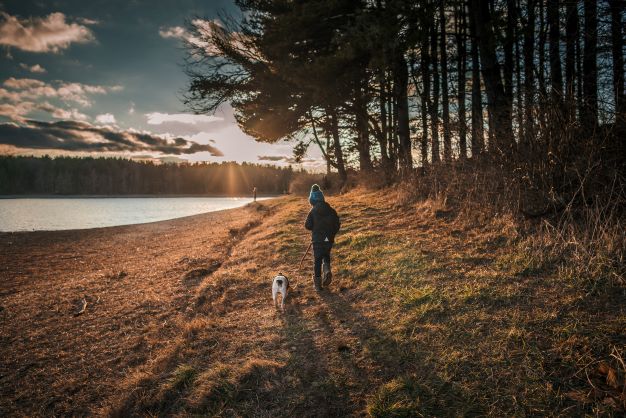5 Simple Gratitude Nature Activities for Kids
It’s the time of year when we focus and reflect on everything we are grateful for. We all have people, places, and things that bring joy and wonder to our lives and it is these very things we should show our gratitude. As you and your children begin to reflect on all the things you are grateful for this year, don’t forget about nature. Children seem to instinctively know how to appreciate and embrace the wonder of nature. But understanding the concept of gratitude and giving thanks to nature is something that is learned. Share your love of nature and model gratitude with these five simple gratitude nature activities for kids. Gratitude (noun): the quality of being thankful; readiness to show appreciation for and to return kindness.

Photo Credit: Ali Chandra
5 Simple Gratitude Nature Activities for Kids
1. Spend Time Outside
It really is that easy. Take your children outside and simply enjoy nature together. Go for a hike, meander your neighborhood, play in your backyard, enjoy a playground, or do any number of other outdoor activities together. Nature is there for us to enjoy (and protect), so show your gratitude by being present in and finding joy in the nature surrounding you. You can also use this time to share the meaning of gratitude with your children and ask them to name one thing they are thankful for in nature.
2. Go on a Gratitude Adventure
This can be as simple or complex as you want it to be. The whole point is to share what gratitude is and model how to be thankful to your kids. You can walk through your neighborhood while you and your children point out all the things that they love about nature. You can go for a hike, find a resting spot, and together reflect on everything you are thankful for. You can go to your local park and send your kids on an epic gratitude scavenger hunt. The options are endless. Example: I am so thankful for this tree in fall because the leaves turn orange-red and I think it is beautiful. I also am grateful for this log because it is fun to climb on.
Photo Credit: Jessica Human
3. Pick Up Trash
Giving back to nature is a wonderful way to show you are thankful and it models gratitude perfectly for our children. Spend Thanksgiving morning (before things get too busy) picking up trash in your neighborhood or local park. Better yet, get the whole extended family together and go on a trash cleanup walk. Again, this can be a simple as you want it to be, but a quick explanation as to why you are picking up trash will go a long way toward helping your children understand gratitude. Example: I am so grateful nature is here for me to enjoy, so let’s show how happy nature makes us by helping to it nature clean.
4. Plant a Tree or Pollinator Garden
Another way to give back is to literally add to nature. Planting a tree or shrub or wildflower garden gives back to all that nature is. You will give animals homes, help pollinators do their good work, give people shade and beautiful nature to look at, and so much more. If you aren’t able to do this at your own house, join a local environmental group at one of their tree planting events or plant a small wildflower garden in a pot on your porch. Share with your children how adding to nature is spreading kindness and appreciation.
5. Feed the Winter Birds
Kids love watching birds and believe it or not, winter birds struggle to find food when it gets cold. Make simple bird feeders and show nature your gratitude by helping some of nature’s critters survive the harsher winter weather. This is easy and is another direct way your kids can learn how to show they are thankful for nature.

Photo Credit: Ali Chandra
Showing our gratitude for nature is easy and our kids need to see us do it. Sometimes we need to explicitly say why we are doing something in order for them to learn. (example: I am thankful this trail exists, so I help to keep it clean.) Other times, actions speak louder than words.
How will you show your gratitude toward nature with your kids this year?
ABOUT OUTGROWN
OutGrown is a 501(c)(3) nonprofit that works to create a world where everyone can enjoy the physical and mental benefits of spending time outside. We are focused on creating opportunities and removing barriers to access so families with babies and young children can take their first steps outside. We believe all families have the right to connect with nature, benefit from spending time outdoors and be inspired to a lifelong love of nature. Since its grassroots inception in 2013, OutGrown is a growing community of 280,000 families and over 300 volunteer Branch Ambassadors. More information on all of our programs can be found at WeAreOutGrown.org
EDITORS NOTE:
We hope you enjoyed reading this article from OutGrown. We’re working hard to provide our community with content and resources that inform, inspire, and entertain you.
But content is not free. It’s built on the hard work and dedication of writers, editors, and volunteers. We make an investment in developing premium content to make it easier for families with young children to connect with nature and each other. We do not ask this lightly, but if you can, please make a contribution and help us extend our reach.
Related Content






Comments